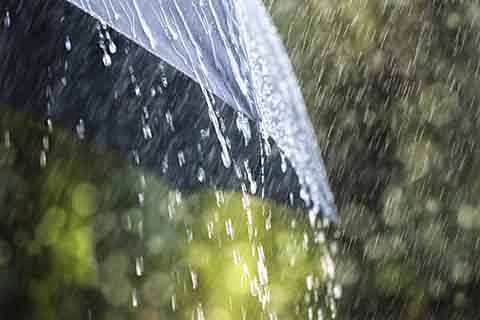Weather forecasting is a scientific technique to predict theconditions of atmosphere for a given location and time through the applicationof the principles of physics, supplemented by a variety of statistical andempirical methods. However, broadly speaking, it encompasses the study ofdifferent changes on earth’s surface caused by the ice covers, snow tides andfloods. Other than that, there are a variety of end uses to weather forecasts.Weather warnings are important because they are used to protect life andproperty. Forecasts based on temperature and precipitation are important toagriculture, and therefore to traders within commodity markets. Temperatureforecasts are used by utility companies to estimate demand over coming days. Onan everyday basis, people use weather forecasts to determine what to wear on agiven day. Since outdoor activities are severely curtailed by heavy rain, snowand wind chill, forecasts can be used to plan activities around these events,and to plan ahead and survive them. Thereforeno wonder, that in 2009, the US spent $5.1 billion on weather forecasting.
The two men credited with the birth of forecasting as ascience were, an officer of the Royal Navy Francis Beaufort and his protégéRobert Fitz Roy. Both were influential men in British naval and governmentalcircles. Though ridiculed in the press at the time, their work gainedscientific credence and was accepted by the Royal Navy and formed the basis forall of today’s weather forecasting knowledge.
The process of weather forecasting is still carried out inbasically the same way as it was by our forbearers, by making observations andpredicting changes. Although the modern tools to measure the temperature,pressure, wind velocity and humidity areobviously better and are yielding amazing results, yet, even themost sophisticated numerical calculations made on a supercomputer require a setof measurements of the initial conditions of the atmosphere.
The assertion that “He alone knows” is absolute becauseuncertainty is the inherent law of nature. Since one cannot have thunderwithout lightning, the polytheistic religions have presumably welded both”thunder god” and “storm god” to have a god of weather.
One cannot know things exactly, even in our chosen fields ofexpertise because observations are so critical to weather prediction, thatatmosphere is truly a random laboratory. The inaccuracy of forecasting is dueto the chaotic nature of the atmosphere. The forecasts also become less accurate as the difference between thecurrent time and the time for which the forecast is being made (the range ofthe forecast) increases. We have seenthat a forecast proposed recently about a given day is more true than the onemade remotely. There has however been a significant improvement in precisionsince the mid 20th century. The digital computers have made it possible tocalculate changes in atmospheric conditions, mathematically and objectively, insuch a way that anyone can obtain the same result from the same initialconditions. The widespread adoption of numerical weather prediction models hasbrought a whole new group of players, computer specialists and experts innumerical processing and statistics to the scene of work with atmosphericscientists and meteorologists. The basic idea of numerical weather predictionis to sample the state of the fluid at a given time and use the equations offluid dynamics and thermodynamics to estimate the state of the fluid at sometime in the future. The main inputs from country-based weather services aresurface observations from automated weather stations at ground level over landand from weather buoys at sea. Moreover, the enhanced capability to process andanalyze weather data has stimulated the long-standing interest ofmeteorologists in securing more observations of greater accuracy. Technologicaladvances since the 1960s led to agrowing reliance on remote sensing, particularly the gathering of data withspecially instrumented Earth-orbiting satellites. By the late 1980s, forecastsof the weather were largely based on the determinations of numerical modelsintegrated by high-speed supercomputers except for some shorter-rangepredictions, particularly those related to local thunderstorm activity, whichwere made by specialists directly interpreting radar and satellitemeasurements. By the early 1990s a network of next-generation Doppler weatherradar (NEXRAD) was largely in place in the United States, which allowedmeteorologists to predict severe weather events with additional lead time beforetheir occurrence. During the late 1990s and early 21st century, computerprocessing power has also increased, which allowed weather bureaus to producemore sophisticated ensemble forecasts.
Qudsia Gani is Faculty (Physics), Cluster UniversitySrinagar






